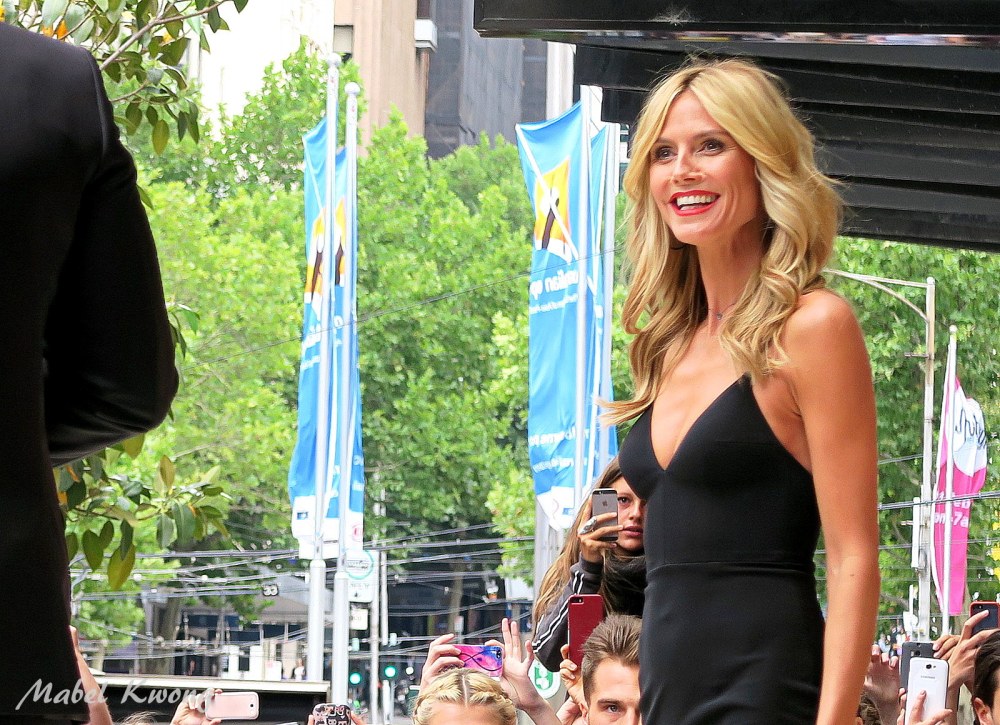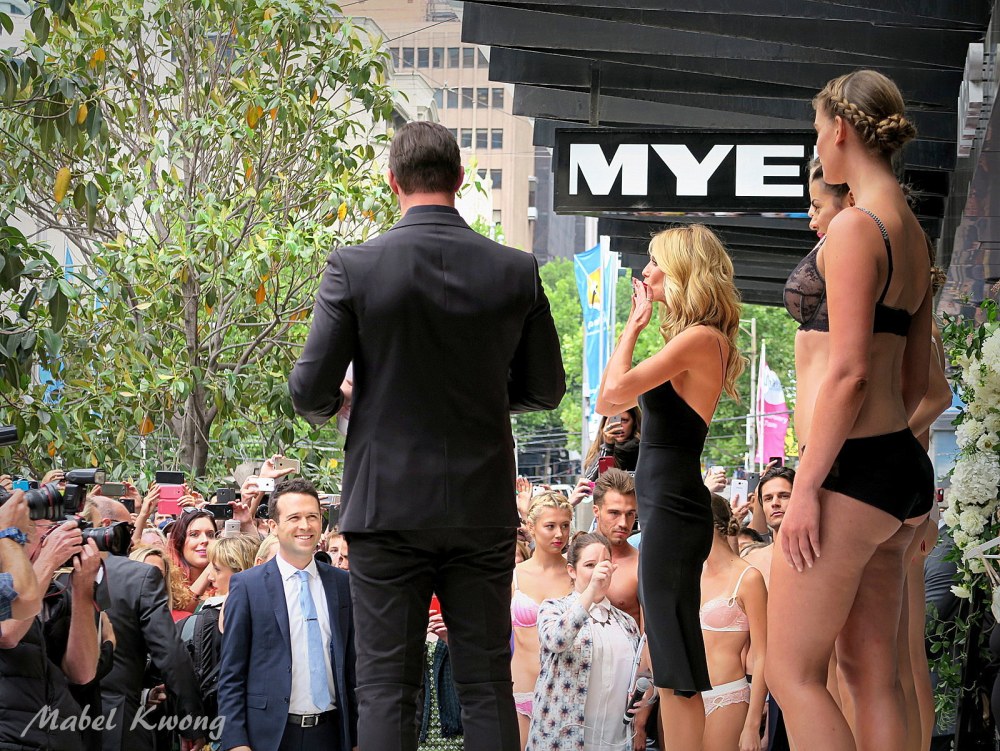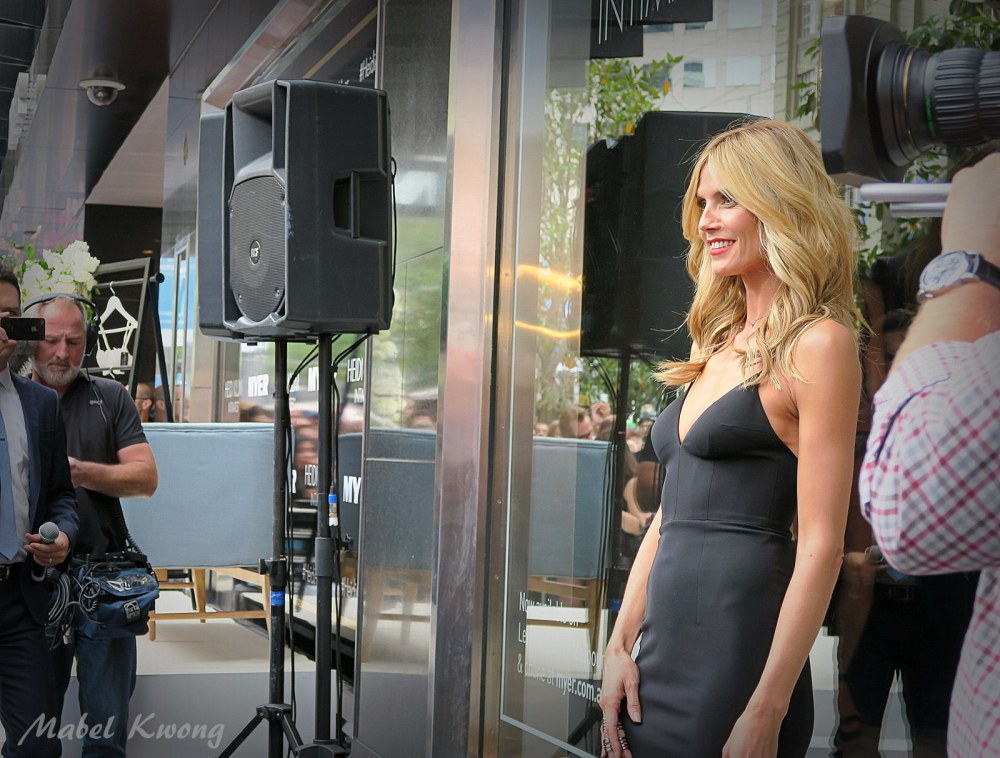We all have our own ways of dressing, our different tastes in fashion and clothes. Every day wear, and formal cultural attire and costumes, come in different styles around the world.
Going to school in Australia, Malaysia and Singapore meant I had opportunities to shop for clothes regularly in three different countries. As a kid, my Chinese-Malaysian mum took me to malls in these cities twice a year during the sales and pointed out clothes she thought looked good on me.

When we’re comfortable with what we’re wearing, we’re confident. Model and businesswoman Heidi Klum | Forces of Nature.
Walking through clothing stores in Asia, we’re bound to see a sea of colourful clothes, be it colourful T-shirts with slogans or traditional sarees and cheongsams. That is, light coloured clothes usually outnumber the darker coloured ones. In Asian cultures, bright colours are auspicious. Red and yellow are symbolic of prosperity for the Chinese, the former signifying progress and the latter earth, farming and growth. During imperial eras, these colours were worn mainly by royalty, those with wealth and power.
Each time my hand brushed over a dark piece of shirt or pair of pants as I wandered stores in Malaysia and Singapore as a teen, my mum remarked, “Why all black? Black, black, black. Looks like you’re going to a funeral.” Death is taboo in several Asian cultures; anything associated with death is met with a blind eye. No surprise my mum hankered me to buy clothes of colour back then. On the other hand, Australians have a penchant for murky coloured clothes: Melburnians can’t seem to get enough of black garments and black is a common colour on the backs of many walking the streets of this city.
It’s not hard to find clothes with patterns on them in Asia. Certain patterns are lucky patterns – for instance batik designs are believed to bring Indonesian children luck.
In comparison to Western dressing, Asian fashion falls on the conservative side. Modest dressing is the norm in some Asian countries because of religious standards that have been around for millions of years, or cultural values. Historically, high necklines and voluminous floor-length dresses were popular with women in the west up until the world wars. Thereafter, exercise and fitness became popular, leading to more body-fitting attire on the market suited to active lifestyles – sparking fashionable trends in skimpy and tight clothing around us today.
There’s not forgetting the cute and kawaii look which never seems to go out of fashion in Japan and Korea. Bright coloured tops, stripy knee length socks and frilly hair accessories makes up a kawaii outfit for the ladies. For the men, bright tops and bottoms does the trick. Alongside fair skin, youthful and wrinkle-free appearances is something many Asians lust after desperately, so naturally some of us are obsessed with kawaii “teeny-bopper” styles. And some Asian girls reckon the kawaii look attracts the guys.
How we dress tends to give away a bit about ourselves. As Lani over at Life, Universe and the Lani wrote, when we move countries, the way we dress may change. If we’re sharp, we might be able to tell which country someone is from judging by what they’re wearing. Right after I moved back to Australia and started wearing more colourful clothing, I had white Australians stop me on the streets asking if I was an international student, and a few of them told me my clothes looked “colourful and flamboyant”. Fair enough since more than half of my colourful wardrobe was accumulated whilst living in Malaysia.
The clothes on our back are a choice, a personal choice that says something about us. The clothes on our back are a form of self-expression, part of our identity and who we are as a person in a moment of time. Sometimes our outfits tell the world how we feel. After all, some of us decide what to wear depending on how we feel or pride style over comfort or vice-versa. My typical outfit I wear to get groceries is a light blue T-shirt and jeans. Catching up with friends, preferably a blue T-shirt and jeans. Going to a fancy dinner, shirt and black-as-night jeans. Does that mean I’m a simple girl who doesn’t care much about following the latest fashion trends? Yes.
Some say the average Australian is laid-back and easy-going looking at what they like to wear. Loose fitting white shirt paired with chino shorts and flip-flops is the popular outfit of choice on a regular summer’s day here.
Going back to Lani’s post, sometimes we’re enticed to try and blend different elements of dressing because we want to understand and feel another culture…and think it’s cool. It’s a plausible reason why we see Asians appropriating Western standards of fashion and the other way round these days. Samfoo and jeans are a popular pairing in Asia. Australians are encouragingly more open towards wearing the hijab in a multicultural world.
Some reckon that as we age, our dress sense matures and we’re inclined to wear neutral coloured clothes. Not too sure if that will ever be me.
At the end of the day, looks and what we wear only say so much about each of us.
What’s your favourite every day work/party outfit?


I hadn’t read this older post of yours, Mabel! I could see how the shopping adventures would vary widely between the cultures. I personally rarely wear all black but interestingly enough tonight I was at a nice restaurant where all servers wore all black. I believe it was their “uniform” although they each wore their own take on it (skirt, dress or pant). I wouldn’t think “this is morbid like a funeral” but that’s because of where I am, in western society. By reading your article here, I found another way to look at it. You’re such a great writer 🙂
LikeLike
That is such an interesting observation that you made at the restaurant you went to. Come to think of it, I think a lot of service or retail staff are required to wear black, or at least black pants as part of their job. I’ve always noticed the servers at McDonalds here in Australia always wear black pants and black shoes.
Thank you so much for stopping by the older post, Christy. Hugs to you ❤
LikeLike
Since I was twelve or so, I haven’t worn dresses or skirts any more. It’s been well seventeen years, I guess. I am just too used to trousers; they are practical in everyday situations to me. My choices of clothes are very often simple ones, I’m most comfortable wearing them.
Poor me, sometimes, I do feel like an odd fish being around almost all females in dresses at weddings. My sister’s big day is coming, what the heck fancy outfit could actually save me? :))
And I dread that day of mine too (if it happens 🙂 ), to imagine myself in heels, a wedding dress and with make-up is too much for me!! Especially the ‘heels’ part; I’m very short, you know, so I can hardly avoid this.
LikeLike
If you like wearing trousers or pants or shorts, so be it. They are indeed practical. No reason why you can’t wear something that is non-dress or non-skirt to a wedding…or even that to your own wedding. Sure, there is the expectation a dress or skirt makes women ‘fit in’…but not all of us are comfortable with that. Hope you find something to wear for your sister’s wedding. Maybe a very fancy eye-catching top along with trousers 🙂
LikeLiked by 1 person
In some places around this world, people would scold me for ‘not making an effort’, ‘being inappropriately dressed’, if I don’t dress up on some occasions. I’ve heard such blame from my mother or aunts for several times. There is no reason indeed, however, people can be fixed in their minds like that.
The hell with it. Fortunately, we still have our traditional ‘dress’ Ao Dai!
LikeLike
Funny how wearing trousers for a woman can be seen as ‘not making an effort’. It’s so true, and odd that this thought still exists today. Finding a pair of pants and anything really that fits is already an effort for some of us already.
LikeLiked by 1 person
”Millions of years”?… okay, sure
LikeLike
Thanks for reading.
LikeLike
Pingback: Western and Eastern fashion values and differences – ANNUS QURESHI
Mabel, I wonder if Melbournians wear black because things used to be much more formal, and because it matched the weather for much of the year? If you look back to colonial times, I don’t think it was the done thing to flaunt wealth, and colours were seen as garish and crass. It probably started to change in the 1920s with people like Miss Fisher 🙂
Beyond that, I think many societies (especially Australia) are very fluid at present, with many old certainties falling by the wayside. And this is showing up in a wide variety of views around what is appropriate in terms of etiquette, parenting…and fashion.
As a kid in the 1980’s, I don’t think the majority of Australian men worried one way or the other what they wore. In many cases, the omen in their lives picked their clothes for them. And I think that lingers in many parts of the culture today. In terms of what you say about sending a message, maybe the default one for Australian men is “I have no idea what I’m doing with my clothes” along with “I don’t care”! 🙂
But that’s shifting now that the world is more open, and concepts of masculinity slowly change. I lived in Japan some years ago, and it had a major impact upon me in all sorts of ways…including fashion. There’s definitely the kawaii stuff coming out, but Uniqlo is also well known for both genders. At the other end, Japan does high fashion as well to a much greater extent than Australia does. And much of the hign-end Japanese clothing for both genders goes back to older ideas the Japanese have about colour. I can’t find it easily online, but Beth Kempton, in her book Wabi-Sabi, talks about Japanese colours falling into 4 different styles. In this context, the earthy colours rank the most highly in terms of social class – bright colours are seen as garish and childish.
LikeLike
That is an interesting thought on wearing black because it was considered more formal and matched the weather. It is a good point that in history, bold and bright colours are regarded as garish and crass. For a very, very long time, black is associated with funerals and mournings.
It is also a good observation that men and women have different approaches to dressing. In the past, men were the primary leaders of society and had to wear some kind of uniform as part of their role – not that they cared about how they looked. Women have expected to dress up across many cultures throughout history. This has probably translated somewhat to the mentality towards fashion toward.
Living in Japan sounded like an eye-opening experience for you. Uniqlo is an interesting example when it comes to the topic of clothing and fashion. It’s a brand well-known and well-received all over the world today – and like the ideas in Beth Kempton’s book, a lot of its clothes are wardrobe basics in neutral or muted colours. Interestingly enough, the quality and sizing of Uniqlo in the Western countries and Eastern countries are different, and some clothing collections are unique to certain countries…which I guess is to suit different sizes and tastes towards clothing.
LikeLike